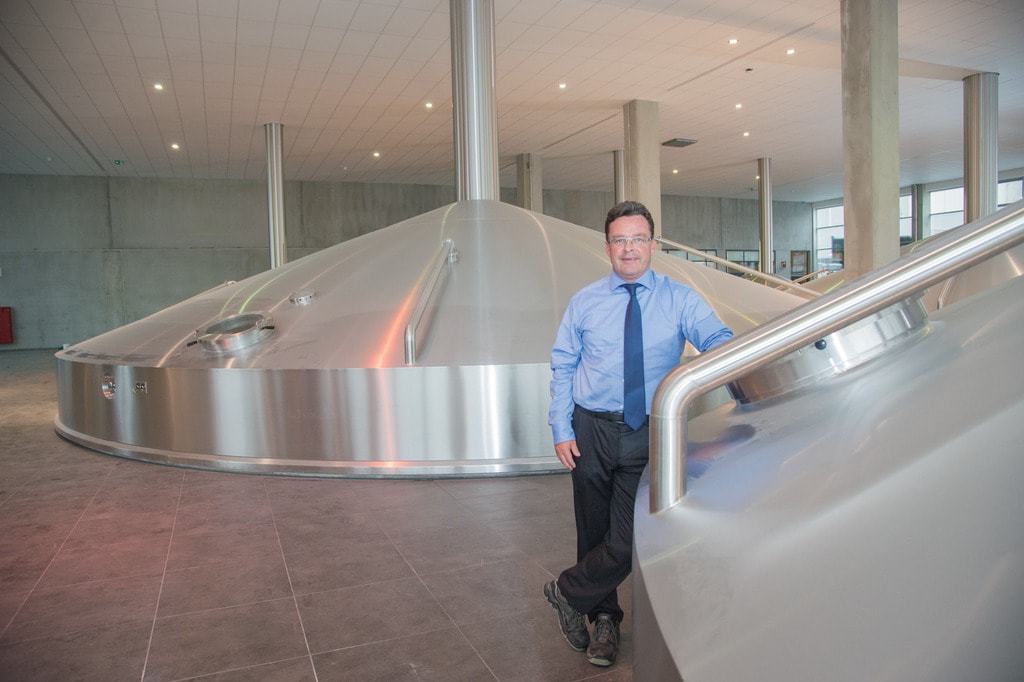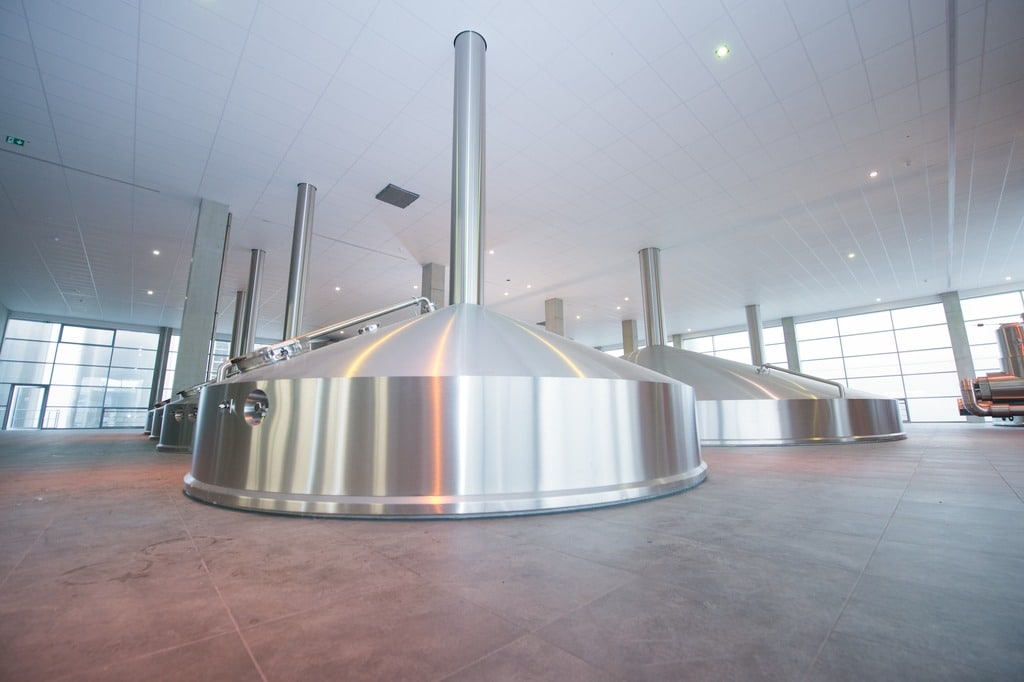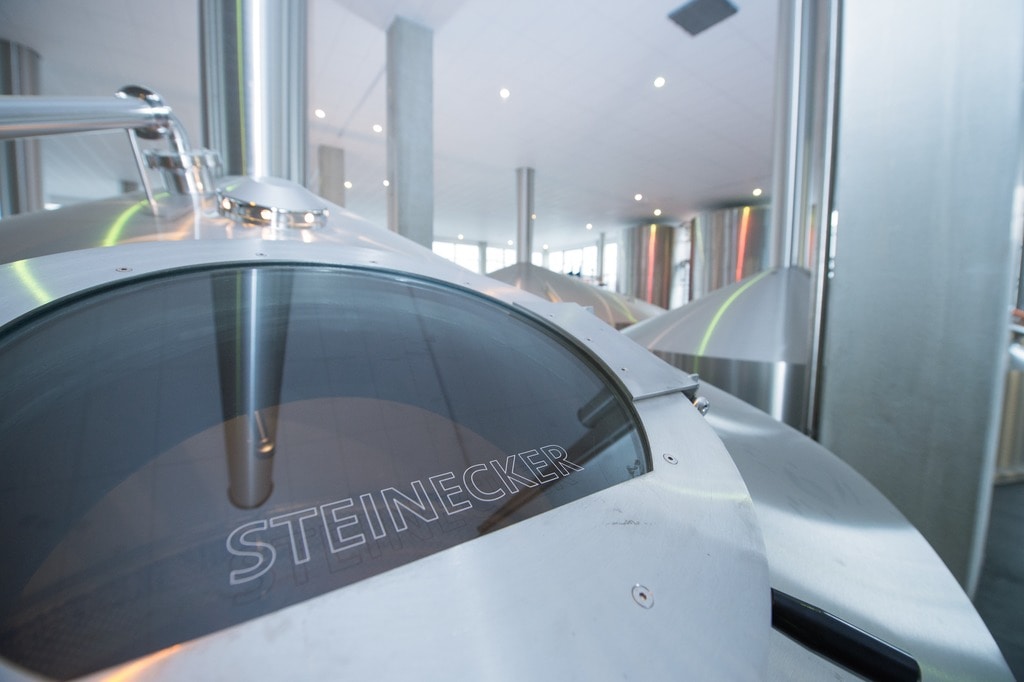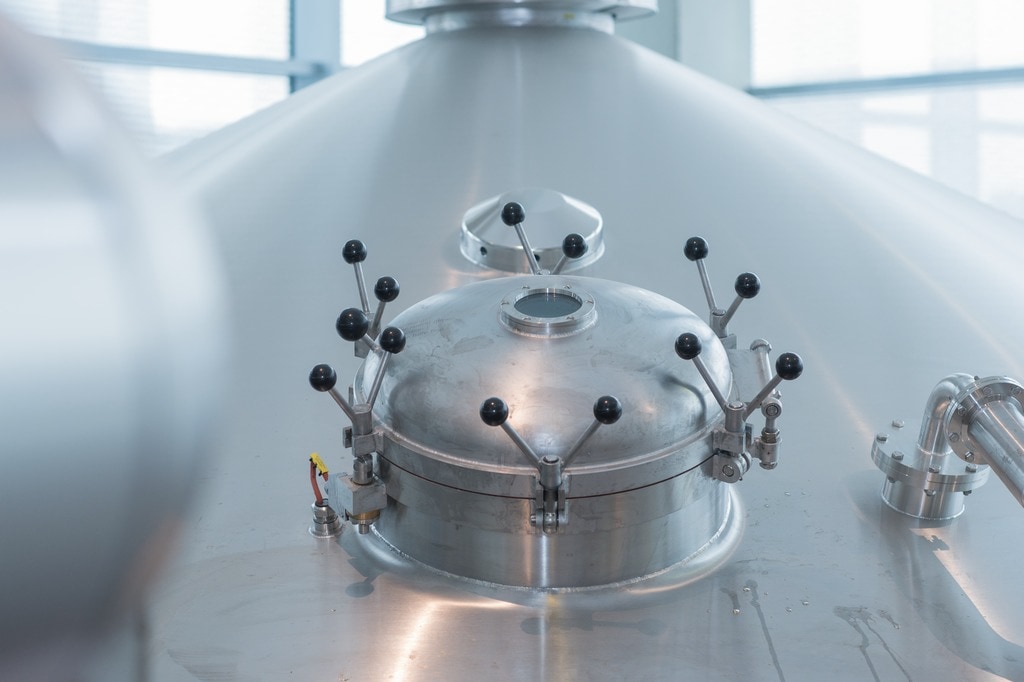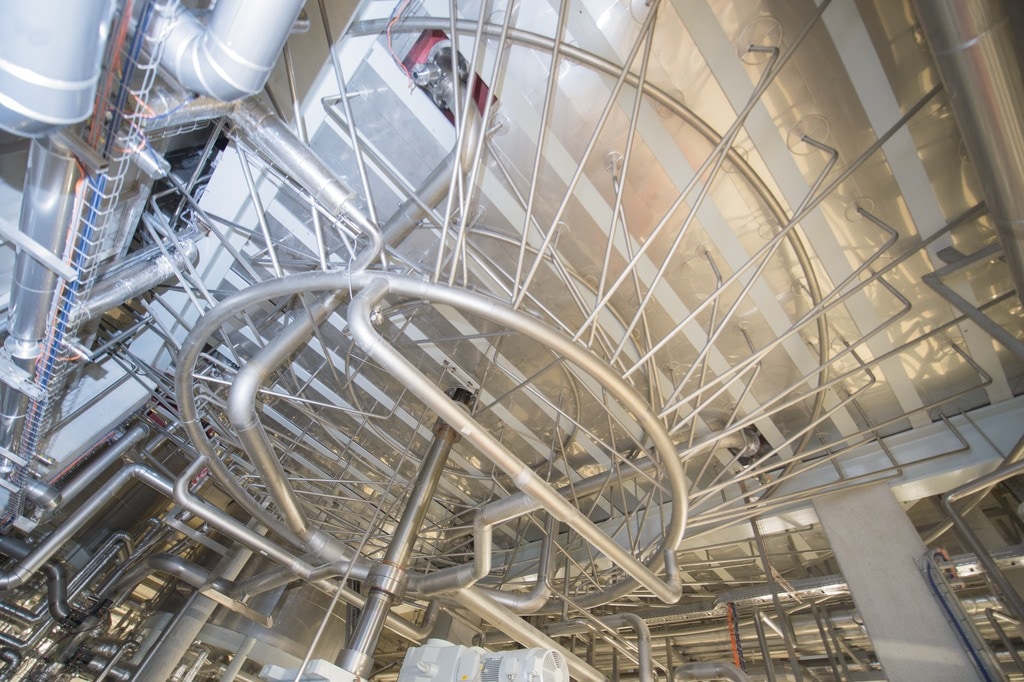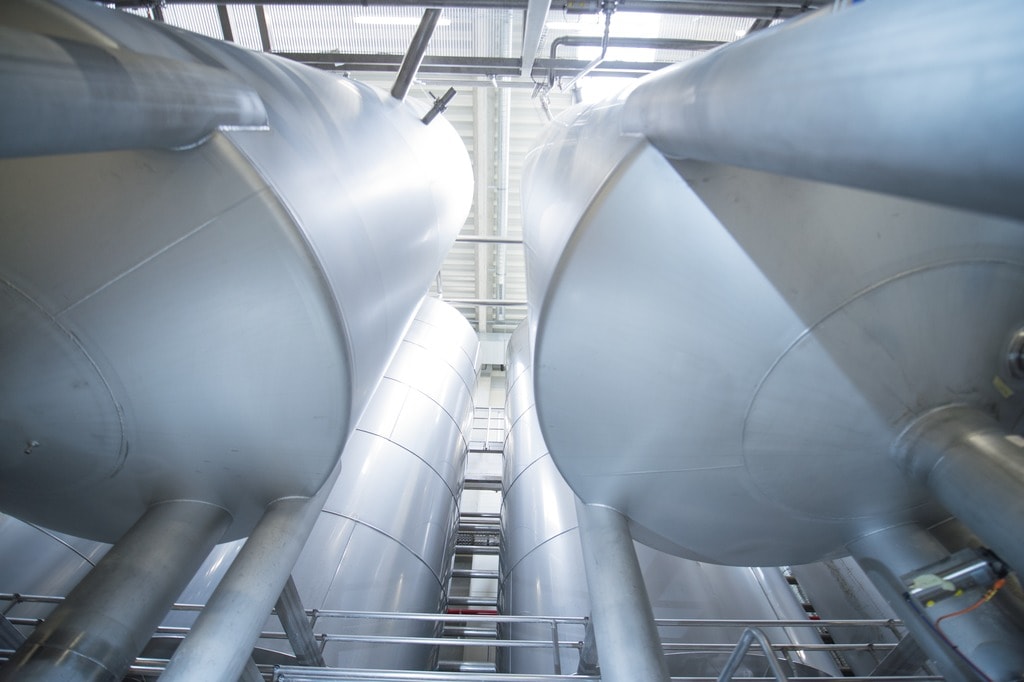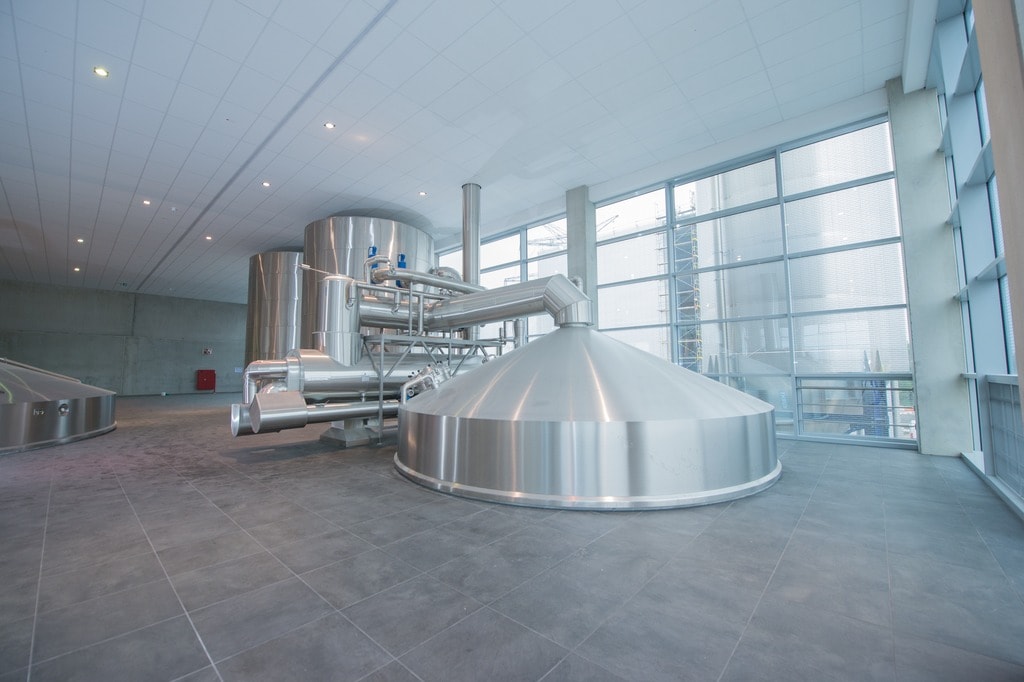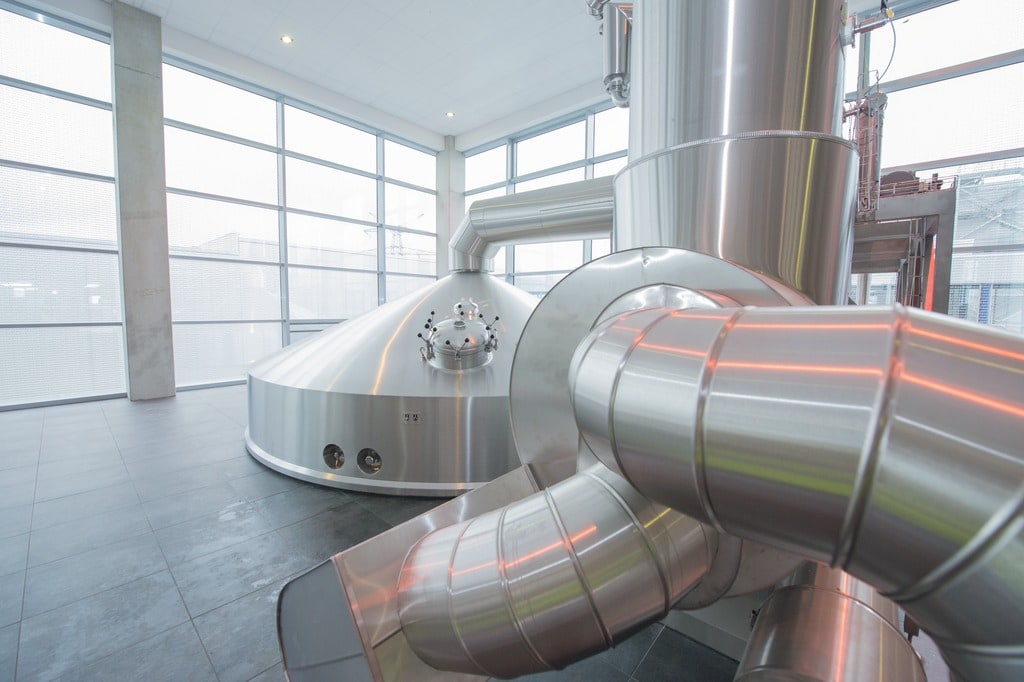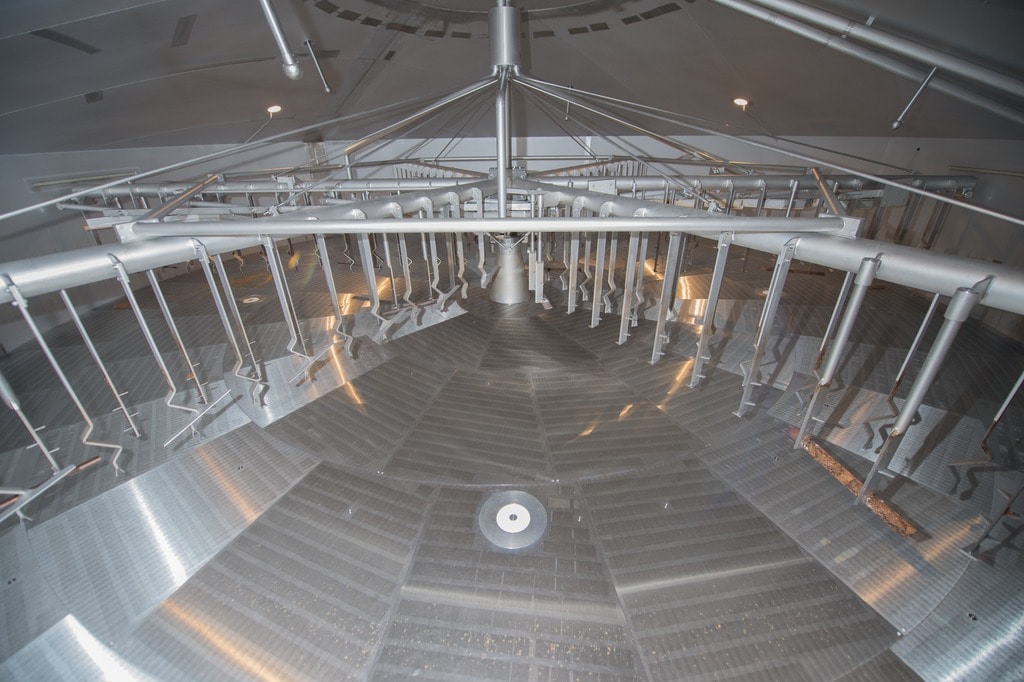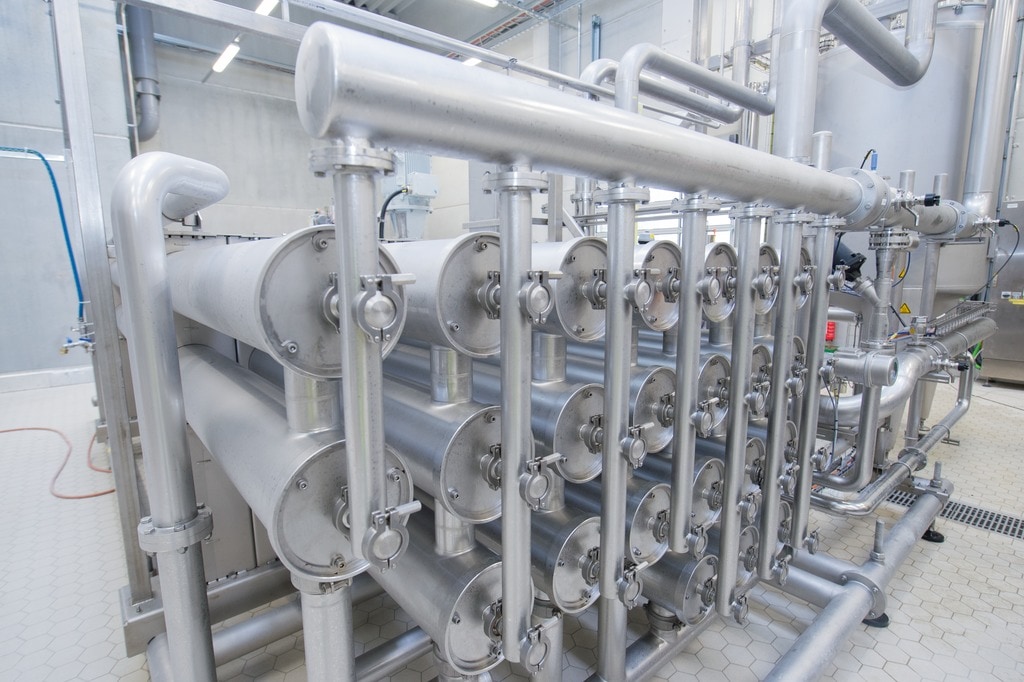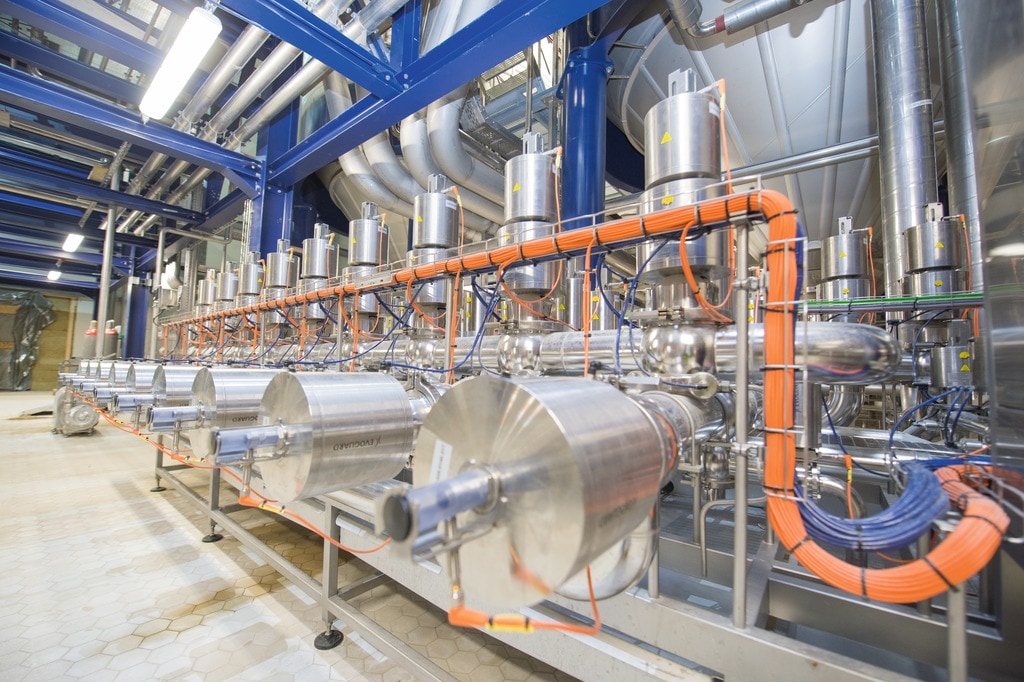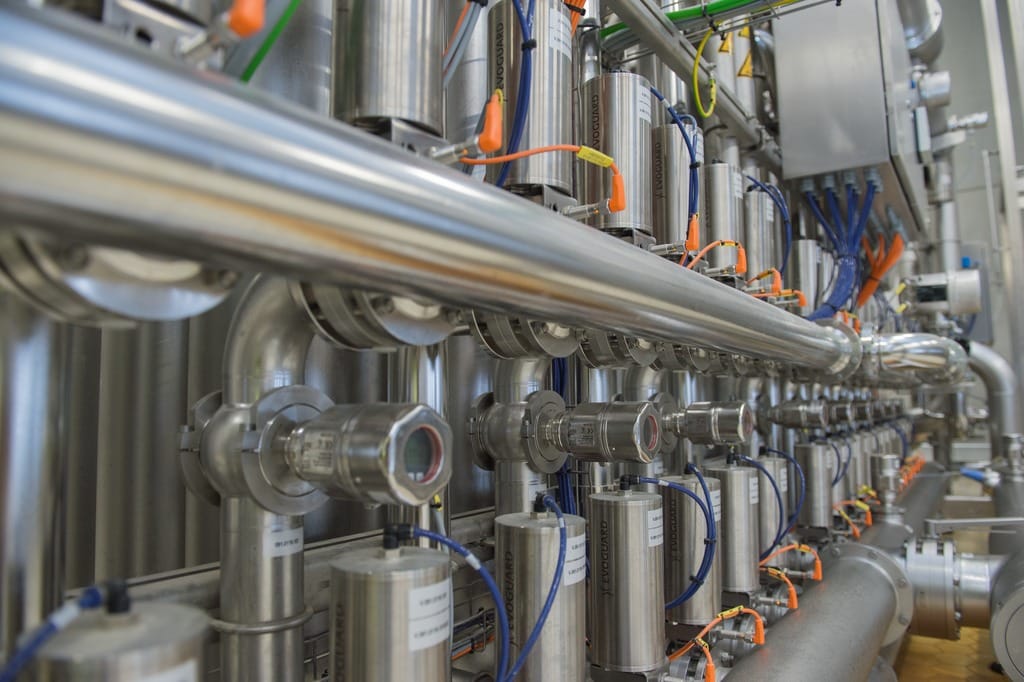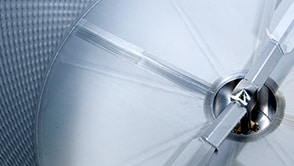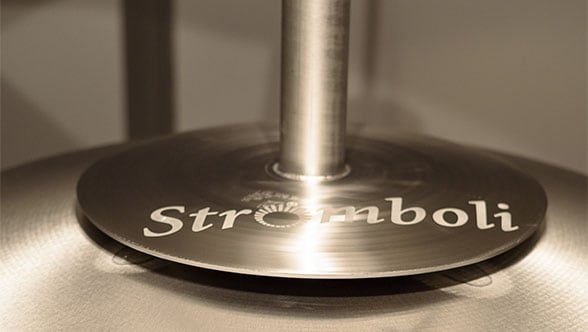Traditional brewing craftsmanship using state-of-the-art systems
What in times long past used to be far outside Munich’s municipal boundaries had evolved into an inner-city location where the brewery had meanwhile come up against the limits of further growth. So relocation was an urgent imperative. This was successfully completed when Paulaner recently opened its new greenfield brewery in Munich’s Langwied suburb. Krones supplied not only two brewing lines but also all of the process technology required for yeast, cold section and cleaning, plus the process control system. “Good, better, Paulaner” is as of now using Steinecker technology for brewing its beers.
One of the brewery’s maxims has always been to combine traditional brewing craftsmanship with state-of-the-art technology. To this end, Paulaner commissioned Krones as the general contractor for the production and process engineering kit, with interfaces both to the energy supply operation and to the bright-beer tank cellar and filling kit. Krones’ scope of delivery included the entire technology for two brewing lines, the yeast cellar, integration of the fermentation and storage cellar, the filtration and the bright-beer tank cellar. “Steinecker has traditionally been known for pursuing technologically innovative approaches on the one hand, for example with the lautering technology in the Pegasus or the Stromboli wort boiler, but also for simultaneously staying true to Munich’s archetypal brewing methods,” says Paulaner’s Managing Director Supply Chain Dr. Stefan Lustig. “At Steinecker, we were able to find technological aspects which facilitated our decision-making process. As a general rule, when choosing the technological kit, we were largely guided by what we were working with in Nockherberg. What’s more, we had a relatively short time interval between commissioning and ramp-up of the new facility, and shutting down the old one – and therefore, quite obviously, we were keen to minimise the quality- and taste-related risks involved. It was for these reasons that here, too, we opted for mash tun plus wort copper for our field-proven, traditionally Bavarian two-mash decoction process, which is precisely what makes the Paulaner beers taste so special.”
For the lauter tun, Paulaner was keen to have a large lautering surface, for ensuring both top quality and high performance. “With Stromboli, we opted for a wort boiling system that gives us options for variation, so as to find the right balance between the thermal processes we want on the one hand, and evaporation rate and energy efficiency on the other,” says Dr. Lustig. “The Steinecker brewhouse will enable us to find the right leverage for controlling this appropriately”
Two identical brewing lines
Each of the two identical brewing lines has been dimensioned for ten brews a day with 900 to 980 hectolitres of hot cast wort per brew. Two Powermill wet mills each grind up to 40 tons of malt per hour and line. Each of the two brewing lines features two ShakesBeer mash kettles, each with a mash tun and a wort copper, for the traditional two-mash process. The two Pegasus C lauter tuns each have a diameter of 11.5 metres and hold 210,000 litres, which most probably ranks them among the largest in Germany. They constitute the heart of the brewhouse.
Moreover, each brewing line includes a wort copper, a whirlpool, a product holding tank and a biological sour-wort system with a sour-wort tank for adjusting the pH values. The wort coppers have been designed for low-pressure boiling, and equipped with Stromboli internal boilers. “I am convinced that with Stromboli we will be achieving good evaporation, and also be getting evaporation rates in the range of three to four per cent,” explains Dr. Lustig. One vapour condenser each with an energy storage tank for 1,400 hectolitres serves for energy recovery.
Fully automated cellarage technology
A total of 63 tanks are used in the fermentation and storage cellar, in eight fermentation and storage sections. These are in tank-in-box-system design with room drying but without insulation. Evoguard valves in double-seat design here ensure no-leak switchovers, as they do in the bright-beer tank cellar. “We expect Evoguard to provide us with a high degree of microbiological safety in our operations, which have been automated throughout,” emphasises Dr. Lustig.
Full-coverage automation from the grain intake to the filling hall is handled by the Botec F1 process control system. And the DynaRoute path control tool ensures system dependability in the cellars. This software uses preselected criteria to automatically identify the piping route it can use, and for a product transfer in the cellar determines an appropriate link between source and destination. The system’s brain proper, the route controller, taking the system’s current condition into due account, checks what media are contained in what parts of the piping, handles control and coordination of the paths, and logs all procedures involved. “This, too, is a major change for our staff. Whereas in the Nockherberg brewery we had the classical separation of brewhouse, fermentation and filtration, each as a dedicated separate section, in which employees had their own specific jobs, we are now controlling all processes from a single control room. Needless to say, this is a paradigm shift for the staff, a journey into a new world. And here automation with Botec and DynaRoute helps considerably,” comments Dr. Lustig.
A new era of beer-brewing
The filtration kit in Paulaner’s new brewery consists of a diatomite-free membrane filtration system. For wheat beer, centrifuges are used. Krones’ scope of delivery likewise included the new brewery’s water treatment system, which utilises a Hydronomic with ultra-modern membrane technology, three UV units, a water degassing unit rated at 550 hectolitres an hour, plus a buffer tank for degassed water. The Hydronomic unit used here is one of the biggest water treatment systems ever built.
Besides the components mentioned above, Krones also installed the entire piping for all the job sections involved. “Piping and link-up to the infrastructure worked very well. We had really great site managers from Krones, and together with the installation specialists and the commissioning team Krones had sent us a highly committed crew who in just a few weeks managed to turn a maze of pipes into a fully functional brewery,” says a gratified Dr. Lustig. “ Right from the start, cooperation with Krones was very good and constructive. In view of the result achieved, I could in fact sing up to the slogan ‘Good, better, Steinecker’ but I think we’ll just stay with ‘Good, better, Paulaner’ all the same – after all, we want to sell our beer.”
Wouldn't that be something for you too?
